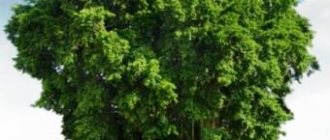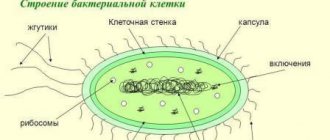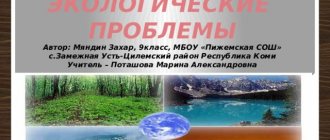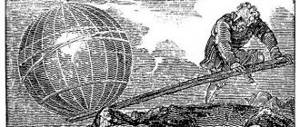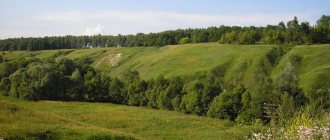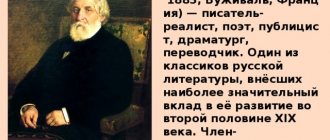Birds
The basis of the avifauna of the Perm region consists of species from two ecological groups. The first group - dendrophiles - birds are confined to various forests and bushes. The second group is limnophiles - birds confined to aquatic and semi-aquatic biotopes.
The most numerous of the first group are the following species: woodcock, gray crow, capercaillie, song thrush, dubrovnik, great spotted woodpecker, lesser spotted woodpecker, gray woodpecker, black woodpecker, wood accentor, common crossbill, yellow-headed kinglet, common cuckoo, barn swallow, and Moscow a gray flycatcher, ordinary oatmeal, reed oatmeal, ordinary quail, green curb, tin, ordinary creep, hazel grouse, cricket ordinary, tinting tint, lord-toe, Garden glorification, Glorka-Zavirushka, Teterev, Lugovoi, Chibis, Chibis, Chibis, Chibis .
Among the birds associated with aquatic and semi-aquatic biotopes, the most numerous are the following species: snipe, great snipe, merganser, mallard, carrier, river cricket, wigeon, yellow wagtail, fifi, tufted duck, black duck, teal, teal, pintail.
The mallard drake is easily distinguishable thanks to its shiny dark green head.
By the beginning of the 21st century, 286 species of birds were registered in the Perm Territory, of which 51 species belong to hunting and commercial species: ducks, including mallard, wigeon, tufted duck, gray duck, teal, pintail, shoveler; waders, including snipe, great snipe, garden snipe, great snipe, morodunka, crystal, turukhtan; gallinaceous birds, including black grouse, wood grouse, hazel grouse, quail, white and gray partridge; wild pigeons, including wood pigeon, clint pigeon, and common dove.
37 species are included in the Red Book of the Perm Territory: golden eagle, marsh harrier, great bittern, great godwit, great curlew, great spotted eagle, great gray owl, aquatic warbler, sparrow owl, merlin, great snipe, European blue tit, European black-throated loon, golden plover, falcon, corncrake, red-throated loon, red-breasted goose, oystercatcher, whooper swan, little tern, imperial eagle, tawny owl, white-tailed eagle, quail, lesser white-fronted white-fronted eagle, peregrine falcon, gray partridge, gray shrike, osprey, Central Russian ptarmigan, curlew , steppe harrier, tundra partridge, eagle owl, black stork, hawk owl.
Fauna of the Urals presentation. Presentation of “Birds of the Urals”. Animals of the Subpolar Urals
Department of Education of Yuzhnouralsk MDOU combined type No. 19 “Smile”
Slide 2
Children of the senior group “Gnomes”, their parents and teachers of the MDOU - combined kindergarten No. 19 “Smile” in Yuzhnouralsk.
Slide 3
Development of children's cognitive activity and erudition in the field of knowledge about nature. Development of creative initiative and determination in children in the process of searching for answers to the question posed; Development of curiosity; Fostering a sense of belonging and inseparability of the existence of man and nature; Fostering in children a love for their native land and its natural resources.
Slide 4
Slide 5
Slide 6
Stages of the project Activities of children and parents Activities of the teacher Stage 1. Identifying the problem. Involving parents to participate in the project. Discussion of the problem; Setting tasks for parents; Identification of issues within the project. Stage 2. Organization of work on the project. Collection of information; Planning joint activities. Organization of children's cognitive activity; Selection of literature, illustrations on the topic; Conducting an excursion. Stage 3. Practical activity to solve a problem. Examination of illustrations, encyclopedias; Drawing; Observation of animals in the zoo. Reading fiction. Organization of work on the project; Coordination of activities of project participants; Providing practical assistance. Stage 4. Project presentation Children's presentation; Lesson Help in preparing a presentation.
Slide 8
We learned what sounds animals make and where they live. We played board and printed games, role-playing games, and dramatization games. Created power supply chains. . Vova R. Yana Sh. Polina S.
Slide 9
Animals of the Urals are elk, brown bear, wolves, lynx, wild boars, foxes, hares, roe deer, hedgehogs, squirrels, mouse-like rodents. That all animals moult with the onset of cold weather. Molting in animals is a gradual change of fur. Instead of summer wool, a new thick, fluffy one grows in the fall. But some change the color of their fur coat in order to camouflage themselves and become invisible, these are: Hare - hare - brown-gray in summer, and white in winter, Squirrel - reddish in summer, and gray in winter, Ermine - brown in summer, white in winter , Weasel is yellow-brown in summer, and pure white in winter. Roe deer are red in summer and gray in winter. Squirrel Roe deer ermine Arctic fox Weasel hare
Slide 10
When preparing for winter, animals behave differently. Squirrel is stocking up. Dries mushrooms, berries, collects nuts, acorns, cones. Others arrange and insulate the home: a den for a bear, a hollow for a squirrel, a hole for a hedgehog, a hole for a fox. (dry leaves, moss, feathers, wool). They hibernate - a bear, a hedgehog, and gain fat. Wild boar, elk, hare, wolf, and fox find food in the forest all year round. We read Trutneva’s poem “Squirrel” and asked riddles: Why are there mushrooms on the Christmas tree? Do they sit astride branches? Like a squirrel, I shed my fur coat. Not in a basket, not on a shelf, I change gray for white. Not in the moss, not under a leaf - I’ll hide under a bush, Near the trunk and among the branches. I’ll sit down under a pine tree, not wearing them on the branches. The animal will see and not recognize me. Milk mushrooms, saffron milk caps, bruises, forest ones. Fat boletus - And I eat frozen winter, not dry autumn grass, berries, bark. And put on bitches! Who arranged them so cleverly? We played search and educational games. Who cleaned the trash from the mushrooms? character: Why do the fox and the squirrel have such a fluffy tail? Why does a hare have such long, sharp teeth? Can you call a forest home? Lada P. Yana Sh. Anya N.
The fauna of our region.
Wolverine In appearance, wolverines are a little similar to bears, so they were previously considered relatives of them. Currently, the wolverine belongs to the family of martens, in which they are classified into a special genus - wolverines. But the wolverine also differs from martens: it has a dense, massive body, short legs with wide feet, on which strong claws are located. Wide feet make it easy to move even on loose snow, which helps this animal survive the winter.
The red fox, a favorite character in fairy tales, has been known to everyone since childhood. Indeed, the bright red color of the fur is perhaps the most well-known characteristic of a fox. Other features that distinguish a real fox from other species (for example, from the corsac fox living in other regions of the Urals) include the white end of the tail, the dark coloring of the ears and the front side of the paws. There are 11 known species of foxes. Fox The fox has very good hearing: the subtlest squeak, the rustle of a mouse's tail will not go unnoticed. Foxes also have excellent visual memory. She knows her hunting area well. The fox lives in holes that it digs in elevated places; often occupies burrows already dug by badgers or marmots.
Lynx Lynx belongs to the family of mammals of the cat genus. It is also somewhat similar in appearance to domestic cats; differs from the latter in its large size, long legs and tufts on the ears. The lynx's body length reaches up to 110 cm, and with a tail - up to 130 cm, weight from 8 to 30 kg. Look - a typical cat, but large, on very high legs, with magnificent whiskers on the cheeks and large tufts at the ends of the ears. The coat is soft, thick, grayish-red in color with dark spots. The lynx has a very short tail, as if chopped off, and a very wide paw, which is also densely covered with coarse hair. Such paws play the role of a snowshoe, and the lynx, despite its rather large weight, can easily move through deep snow.
Hare In the Urals, white hares are large, the average weight is about 4 kilograms, some individuals reach 5 kilograms. The white hare can be found both in the forest and in open areas - in fields, but still this rodent prefers to merge in forests with well-developed undergrowth. Hares are vegetarians. Their diet depends on the season. In summer they eat various herbaceous vegetation, preferring cereals, and in autumn and winter, when grass is almost unavailable, they switch to branches and bark of various trees and shrubs. In winter, animals gather together near thickets of bushes, so an accidentally fallen tree very quickly loses all its bark and branches. In the spring, the animals also gather in groups on lawns with young grass and get so carried away with food that they lose their usual caution. The hare's hearing is best developed, but his vision and sense of smell can fail him: he will not be afraid of a motionless person.
Ermine The ermine has a peculiar appearance: a thin, very flexible body, a lively rounded muzzle with small ears, a long, non-furry tail (9-12 cm with a body length of 16-28 cm), very short paws with sharp thin claws (in the Urals and Western Siberia The largest species of ermine lives - the West Siberian, or Tobolsk ermine). The color of the fur is protective: in winter it is pure white, in summer it is two-colored - the upper body is brownish-red, the underside is yellowish-white. Winter coloring is typical for areas where there is snow for at least 40 days a year. The tip of the tail is black throughout the year. Geographical variability in the quality of winter fur, the color of summer fur and body size allows us to distinguish about 26 subspecies of ermine.
Birds of our region
Great Grebe (Grebe) Great Grebe, or Great Grebe, is the largest of all grebes. They are waterfowl and good divers. And they are often mistaken for ducks; they have nothing in common with the latter. In addition to the fact that they differ from ducks in appearance, they also sit much deeper on the water; this is due to the fact that the bones of grebes, unlike many other birds, are mostly not hollow and are less filled with air. Grebes do not row under themselves with their legs, like, for example, ducks or seagulls. The legs work very effectively from behind, forming something like a ship's propeller. Since grebes almost never exist on land, the plumage has to be cleaned and lubricated on the water. While doing this, they lie down first on one side, then on the other. Legs frozen in cold water are warmed not like ducks, hiding them in the plumage of the belly, but by lifting them out of the water to the side.
Gray Heron The Gray Heron is a large bird 90-100 cm long, with a wingspan of 175-195 cm and a weight of adult birds up to 2 kg. The head is narrow, with a large, pinkish-yellow, dagger-shaped head. On the back of the head there is a black hanging tuft of feathers. The neck is long and bent back when flying. The gray heron is a migratory bird. Winters in most of Africa, sub-Saharan Africa, India and Indochina. The gray heron arrives at its nesting sites early; the first birds appear when the water bodies are still covered with ice and the snow lies almost completely on the ground. These birds make nests on tall trees, but if they are not there, then on large bushes or in reed creases. The finished nest has the shape of a cone, upside down.
The male capercaillie is colored brown, black and dark gray, with white spots on the belly and on the underside of the wing, and a powerful light beak. The female is brownish-red with black ripples. In summer it feeds on grass, seeds, and berries; in winter - pine needles, aspen and larch buds. It nests in both coniferous and mixed forests. Among coniferous forests, it prefers pine forests. It uses stems and branches to line the nest. The nest is a small depression in the soil. The clutch most often consists of 6-8 eggs, yellowish-white in color with brown spots. Wood grouse eggs are similar in size to chicken eggs
Cuckoo Males and females are similar in many cases; the females of our cuckoos have more brown tones in their plumage. They feed mainly on insects, some eat berries, fruits, frogs, lizards, and destroy other people's nests. Many species eat "shaggy" caterpillars covered with bristles, which other birds leave alone. And this is the benefit of cuckoos. After such a delicacy, eaten in abundance, the entire inner surface of the cuckoo’s stomach is completely covered with caterpillar bristles. Periodically, the bird expels these bristles through its mouth along with a layer of the gastric lining. The cuckoo throws its eggs into the nests of other birds. To make it more difficult to recognize its eggs, the cuckoo “counterfeits” them. Evolution has endowed the cuckoo with an amazing property: its eggs are similar in size and color to the eggs of the birds into whose nests it throws them.
The fauna of the Urals amazes with its pleasant charm and diversity of the animal world. It consists of forest, tundra and steppe animals. The rockiness of the mountains affects the living conditions of animals; it is very difficult for them to survive in such conditions. The rich life of the Urals can be studied for a very long time.
Tundra Tundra animals inhabiting the Polar Urals include reindeer, hoofed lemmings, arctic foxes, Middendorff's vole, and partridges. In the tundra of the Urals, among the predators that live here are the polar owl, the bushy buzzard, and the peregrine falcon. Among the birds, buntings, Lapland plantain, ptarmigan, and red-breasted pipit are numerous.
Reindeer Reindeer is a cloven-hoofed mammal. The only deer that bear antlers are both male and female. These animals have wide hooves, which allows them not to fall through in the snow. Deer have very good hearing, but very poor eyesight. In herds, they are guided by the behavior of the leader. In winter, they can get food from under the snow. Deer eat mushrooms, collect bird eggs, drink sea water, and eat algae. Reindeer always remain wild. In captivity, they become tame, but you need to watch them closely; if you don’t, the proud son of the North will run wild again. In the North, a rich person is not considered to be the one who has a lot of money, but the one who has the most deer.
Arctic fox The arctic fox is a small species of fox, quite small, length 45 - 70 cm, weight - from 2 to 8 kg. Arctic foxes typically have white, thick fur, which is designed to protect them from frost. They live in areas of the northern hemisphere with low air temperatures. Arctic foxes eat whatever they find. In cases of food shortage, they try to eat scraps from large predators. Arctic foxes are amazing animals, they live in regions that people consider unsuitable for living.
Broad-leaved forests There are much more inhabitants in broad-leaved forests than in taiga forests. The forests are inhabited by hedgehogs, brown bears, moose, forest ferrets, badgers, brown hares, and wolverines. Among the birds found here are nightingales, orioles, finches, siskins, goldfinches, starlings and rooks. And among the amphibians there are non-venomous snakes, toads and newts.
Brown bear The brown bear lives in the Urals. This is one of the largest animals of the fauna, kg weight of a bear. In the Urals, the bear was a widespread animal. It cannot be called a predator since it feeds on a variety of foods, both animals and wild berries. In the fall, bears get fat and go into hibernation. They build dens on a dry surface, under upturned tree roots. The time it takes for them to emerge from hibernation depends on the bear itself. Poorly nourished bears leave the den earlier.
Squirrel A squirrel lives in the forests of the Urals. The squirrel has an elongated body with a fluffy long tail, the color is dark brown, red, sometimes gray (especially in winter) with a white belly. The animal's paws are armed with sharp claws, and it can run up and down tree trunks with its head. Squirrels sleep in a tree, in a hollow, or in a warm spherical nest they build on their own. proteins are not able to absorb fiber, and therefore feed on vegetation rich in proteins, carbohydrates and fats - seeds, nuts, berries, and also eat insects, eggs and even small birds, mammals and frogs
Elk The bark of young aspen is the best food for elk in winter. In summer they are found in high-mountain subalpine meadows. Moose periodically move in winter in search of better conditions, and can travel even three hundred kilometers. They love to eat the bark of young aspens, and in summer they prefer herbaceous vegetation. The normal summer daily ration is thirty kilograms of food. Moose run fast and swim well.
Steppes The steppes of the Urals are rich in a variety of rodents. Here you can see bobak, steppe marmot, ground squirrel, pika and hamsters. The rodents attract the attention of birds of prey such as the steppe eagle, harrier, golden eagle, kite and steppe kestrel. Typical predators are the corsac fox, steppe polecat and wolf.
Gopher In the steppe zone of the Urals, the gopher is a medium-sized rodent, a representative of the squirrel family. The gopher, depending on the species, can have different sizes - from medium to very small. Body length 14...40 centimeters. Tail length is from 4 to 25 centimeters. The forelimbs of the ground squirrel are usually shorter than the hind limbs. The ears are small, short, slightly protruding from the fur, and slightly pubescent. The gopher's diet includes underground and above-ground parts of herbs that grow in the immediate vicinity of their home.
Steppe Eagle The Steppe Eagle is a bird of prey and belongs to the hawk family. It feeds on small and medium-sized vertebrates, insects and carrion. The body length of the steppe eagle is cm, weight is kg. The bird's wings are cm long. Male steppe eagles are smaller than females. The color of an adult bird is dark brown, sometimes with a red spot on the back of the head. The steppe eagle is under protection. It is listed in the Red Book of the Russian Federation.
Permian endangered fauna
In the vastness of this territory you can find large and small animals, fish, insects and birds. Each of them has a unique origin and specific characteristics. There are animals left in the Red Data Book of the Perm region. This suggests that they are at the stage of extinction.
Hares
In these parts there are 2 types of hares: hare and hare. Let's consider each type separately:
1. Belyak. It's more common. This animal lives mainly in open spaces in coniferous and pine forests. Its main habitat is tall bush. The white hare can often be found on the banks of the river, where it goes to drink water. Every year, in the Perm region, poachers kill more than 10 thousand of these animals.
2. Rusak. And this hare, unlike its white counterpart, lives not in the forest, but in the steppe area. He is attracted to clearings and meadows. In the central part of this area, it is rare to see a hare.
Russian muskrat
This animal is one of the moles. It feeds on insects. In these parts, the Russian muskrat can be found in the floodplains of small rivers. This is one of the smallest representatives of the Permian fauna, which is at the stage of extinction. It is listed in the Red Book as an endangered species.
Redleg (herbalist)
This is a bird that lives in the Kishertsky district of the Perm region. In terms of its dimensions, it is slightly inferior to a pigeon. The average body weight of a herbalist is 150 grams. This creation is sure to attract anyone with its appearance. She has a stately, medium-sized body and a black and orange beak. The legs of the herbal bird are light yellow and elongated. The breast is brownish-pale.
The redfoot's habitat is predominantly aquatic. It can be found near the sea or river, less often in a swamp. She eats:
- Worms;
- Snails;
- Crabs;
- Mosquitoes;
- Shellfish.
This bird is one of the long-livers. Her average life expectancy is 18 years.
Tenkovka
The Chiffchaff bird lives in the northern part of the Perm region. Its size is small. The bird's plumage is dull, its wings are small. Male chiffchaffs are several cm longer than females, their average size is 12 cm.
The grayish plumage of this representative of the fauna has an olive tint. It’s easy to distinguish – just pay attention to the front of the body. Between the eyes of the chiffchaff lies a light white stripe.
As winter approaches, the olive tint of the bird's plumage disappears. It becomes dull and inconspicuous. The chiffchaff winters in India or Africa. But before flying to “warmer climes”, she sheds heavily. At the moment, the number of chiffchaffs is decreasing by 100 individuals every year.
Peregrine Falcon
Almost all animals of the Perm region look impressive in the photo, the peregrine falcon is no exception. Everyone knows this bird as the fastest in the world. In 1 second it flies about 100 meters, and the average hourly duration of its flight is more than 3000 meters. This can't help but impress!
The peregrine falcon is one of the wild animals of the Perm region . To catch a victim, this creature often hides in ambush so that, before attacking, it can make a dash and kill the animal with a quick grip. It dives down, mainly at a right angle. When a peregrine falcon grabs its prey, it presses it tightly against its body with its long talons.
There are often cases when a peregrine falcon's attack ends in the decapitation of the victim. He wraps his claws around her neck so tightly that the flesh in this place is torn. The main prey of this predatory creature is small-sized mammals and small birds.
If within an hour the peregrine falcon fails to find something edible, it will begin to hunt snails. By appearance, it is easy to recognize a peregrine falcon - its body is slightly protruded forward, the color of its feathers is brown-gray, and its eyes are large and black. These are not all endangered species in the Perm region. The list can be replenished with: spadefoot, copperhead, beluga, Volga herring, gudgeon, etc.
